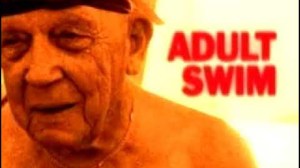
Formalism, when tried for its own sake, has clear and defining limits. Even Shakespeare’s sonnets provided ample flexibility within their form and found themselves tested by the bard who summoned it to new heights. This is not to say that formalism is to be avoid (to the contrary, it is recognized in many masterpieces of multiple media), but that it should not be pushed far beyond its own limits. In the pages of Ice Cream Man #13, writer W. Maxwell Prince and artist Martín Morazzo seem to carefully trace the limits of one formal effect as they craft an issue that functions as a perfect comics palindrome, one where one distinct word balloons and panels read in the standard Western format of top-to-bottom and left-to-right.
Videos by ComicBook.com
Many comics fans will be familiar with the notion of a palindromic issue due to the status placed on Watchmen which possesses a similar fifth issue. That issue, beautifully constructed as it is, primarily relies upon colors, plot, and tone to form its own palindrome and false climax for the series. Ice Cream Man #13 clings more strictly to the visual concept of this concept tracing its roots to ancient Latin as every panel in the issue can be placed in the same order backwards or forwards to form one half of a story. In this fashion it is essentially the same comic twice over, one that could even be read from the middle out, albeit to probably lesser effect. This strict adherence to the notion of a palindrome produces a less nuanced issue than Watchmen #5 or many other collections of roughly 20-30 comics pages that fit the same label. However, many of those issues fail to test their form with such dedication and vigor. While Ice Cream Man #13 is best measured by a single metric, its efficacy in testing the visual palindrome, it succeeds to a wonderful degree by that metric.

The story used as a means of conveyance is a meditation on loss. One man, Paul, left isolated and suffering from the loss of his husband, Michael, seeks answers in the underworld as he literally transcends from a seemingly idyllic neighborhood through a manhole cover into something akin to Hell. That this issue fits so well within the typical tone of Ice Cream Man, both its absurdist take on reality and typical interest in form, makes this particular test all the more engaging.
While the story itself comfortable fills the confines of a single issue of comics, there’s not much nuance to Paul and Michael’s relationship or the forms of grief which Paul has experienced. Instead, this facet of the story is left broad, as are the specifics of this version of the afterlife. While Paul experiences a few elements, whether or not his journey is even through the only version of life-after-death is left unclear. The plot itself is merely a means for conveying one big idea about the nature of loss found in issue’s central spread, nearly a mirror image of itself, a very rewarding mirror image, even for the very style of midpoint one might expect.

The big idea is one worthy of meditation and, more importantly, its depiction does not outstay its well or lost its novelty. Ice Cream Man #13 is ultimately as much about how it tells its message as the message itself. It remains a delight, one that tells each new twist in a delightful new fashion that is almost as interesting upon a necessary revisitation. Reading the same comic essentially twice, and then again as you try it from start-to-finish or finish-to-start remains engaging. Given the length of this particular issue that seem almost impossible, and so Ice Cream Man #13 does the impossible in walking up to the very edge of its own formalist limitations without going over. For that alone it should be commended.
Rating: 5 out of 5
Published by Image Comics
On July 31, 2019
Written by W. Maxwell Prince
Art by Martín Morazzo
Colors by Chris O’Halloran
Letters by Good Old Neon
Covers by Martín Morazzo and Chris O’Halloran








